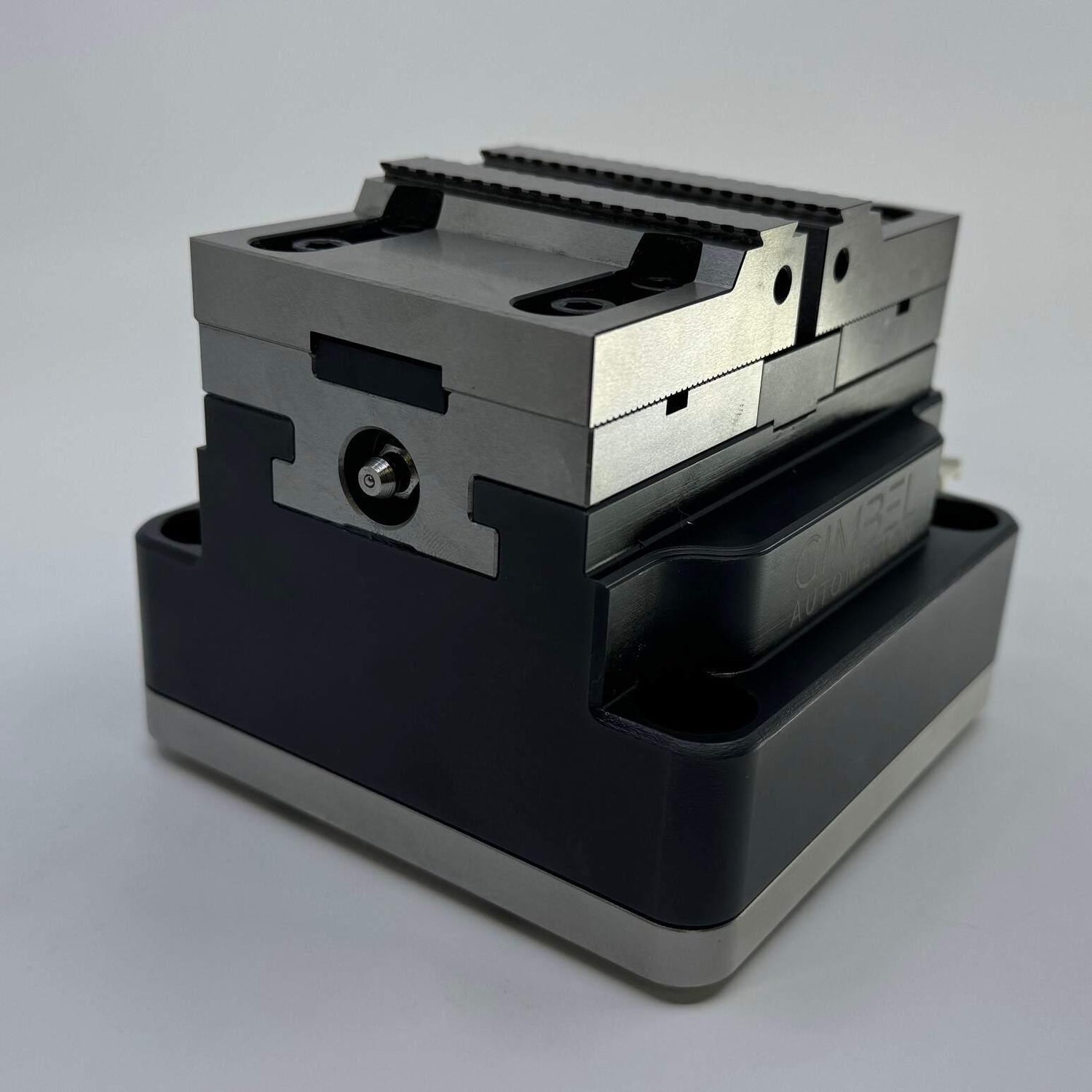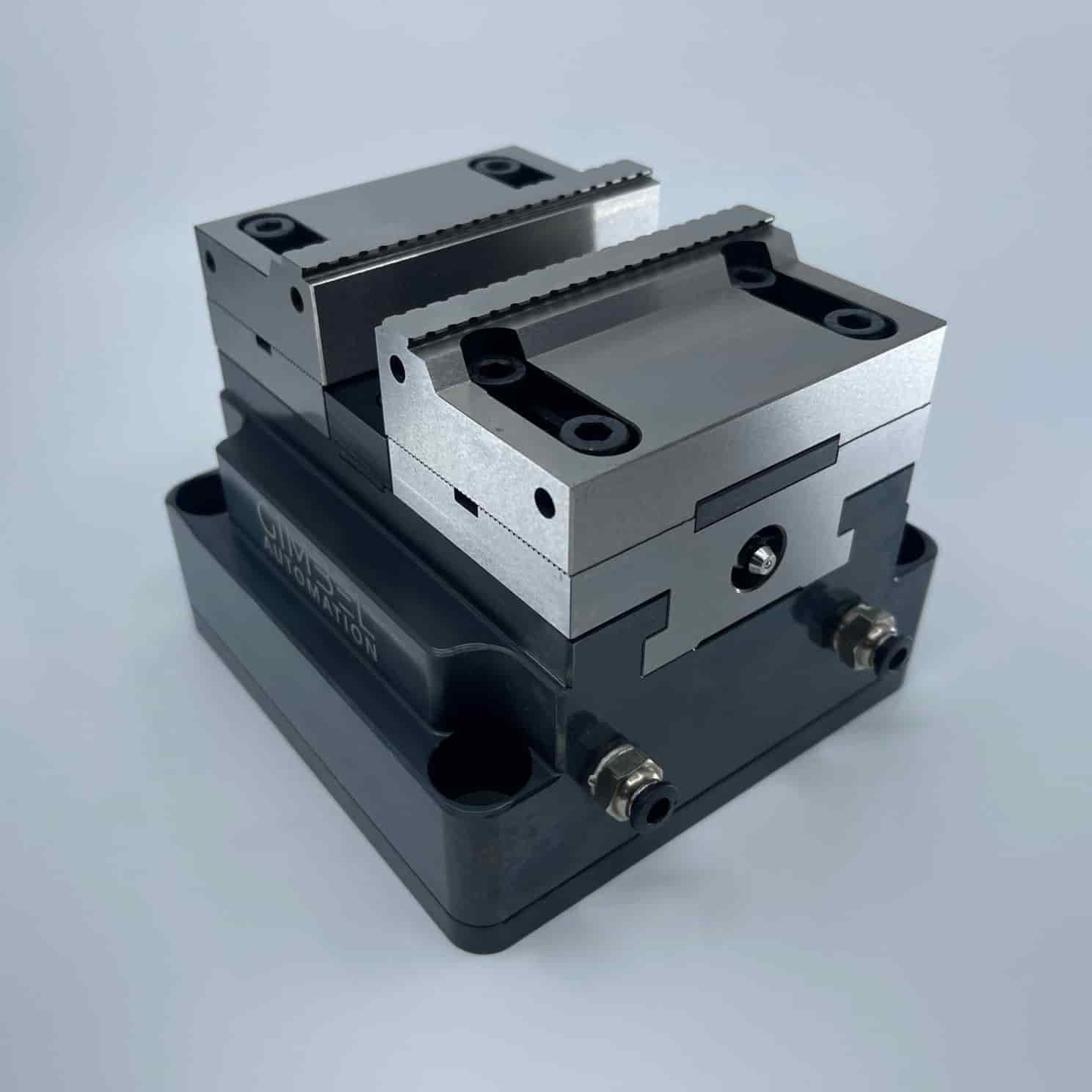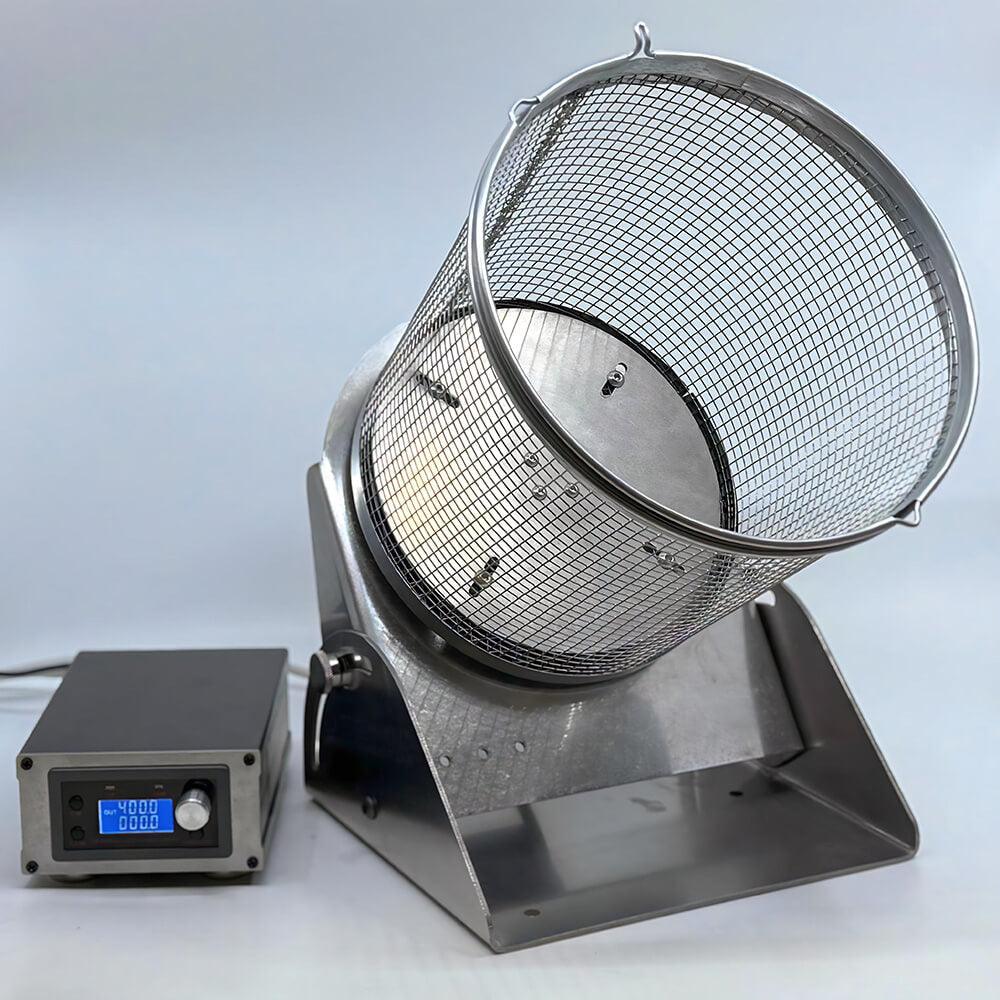Explore AI Summary
What is Pneumatic CNC Workholding?
Pneumatic CNC Workholding is a system used to secure and position workpieces during CNC (Computer Numerical Control) machining operations, using compressed air as the primary means of actuation. These solutions replace traditional mechanical clamping methods with pneumatic pressure, providing more consistent and reliable clamping forces. Pneumatic workholding devices include vises, chucks, and fixtures, all designed to hold the workpieces firmly in place on CNC machines such as mills, lathes, and grinders.
Table of content
What are the Benefits of Pneumatic CNC Workholding Solutions?
1. Increased Efficiency:
Pneumatic CNC Workholding Systems streamline the clamping process, by significantly reducing the time needed for workpiece changes. They rapidly engage and disengage clamps using compressed air. This quick actuation reduces setup times and increases overall efficiency in the machining process. In contrast, options such as manual workholding solutions require physical effort and are much slower to engage and disengage clamps. This is why pneumatic workholding solutions are more efficient.
2.Enhanced Precision and Consistency:
Pneumatic CNC Workholding Systems ensure that each workpiece is held in with the same pressure, which provides consistency and increases precision. On the other hand, manual systems do not assure that each workpiece is held with the same compression. This leads to inconsistent pressure across production. The uniform clamping force that Pneumatic CNC Workholding Systems provide reduces the likelihood of errors and enhances the quality of the finished product.
3.Improved Safety:
Automated clamping reduces the need for manual intervention, thus eliminating the risk of injury associated with manual clamping methods. An improved safety feature on pneumatic vises also includes built-in spring retention mechanisms that maintain clamping force during air pressure loss, preventing accidental release of the workpiece.
4. Flexibility and Adaptability:
Pneumatic CNC Workholding systems can be easily adjusted to accommodate various workpiece sizes and shapes. While these systems can be easily programmed to apply specific clamping forces and sequences, manual systems do not offer this level of flexibility. This feature is useful in automated production lines across a wide range of industries, where different workpieces may require varied clamping pressures and patterns.
5. Reduced Wear and Tear:
The even clamping force distribution of pneumatic systems also reduces stress on the workpiece and the clamping components, extending the lifespan of both the tooling and the workholding device.
6. Cost Savings:
Pneumatic CNC Workholding Systems can lead to long-term cost savings through reduced labor costs by lowering error rates and increasing production efficiency.

What are the Automated Pneumatic CNC Workholding Options on the market today?
Pneumatic CNC Workholding Solutions are transforming the machining industry by offering speed, precision, and adaptability. With advancements in technology, automation, and energy efficiency, these systems are becoming even more indispensable for manufacturers looking to optimize their machining processes. With precise control and real-time adjustments, smart automated systems can handle delicate and complex workpieces with higher precision and reliability. In this part of the article, we will analyze each workholding option on the market.
Pneumatic Vises
Pneumatic vises use air pressure to clamp and unclamp workpieces quickly, making them an efficient choice for many machining operations. Their rapid operation ensures that workpieces can be secured and released swiftly, which is particularly beneficial in high-volume production environments. Pneumatic vises provide a uniform clamping force, contributing to consistent and reliable machining results. Additionally, they offer a simple and cost-effective setup, making them an affordable option for manufacturers looking to enhance productivity without incurring high expenses.
Hydraulic Vises
Hydraulic vises use fluid pressure to securely clamp workpieces by leveraging hydraulic fluid—typically oil—under high pressure. This pressure is generated by a hydraulic pump, which can be manually operated, electrically driven, or powered by another mechanical means. Hydraulic pumps indirectly cause the vise to clamp and unclamp the workpiece with substantial and consistent force. In this manner, hydraulic vises are slow when it comes to clamp and unclamp workpieces. Additionally, they require an operator.
Electric Vises
Electric vises utilize electric motors to control the clamping and unclamping of workpieces. While these vises offer precision and programmability, they provide limited clamping force compared to pneumatic systems, which can be a drawback for heavy-duty applications. Additionally, the advanced electrical components required for electric vises come with a higher cost.

Why Choose Pneumatic Workholding Solutions?
1. Speed and Efficiency
Pneumatic systems excel in CNC Manufacturing shops where quick clamping and unclamping are essential. Their rapid operation enhances throughput, making them ideal for high-volume production lines. Manual systems are significantly slower, requiring physical effort and time for clamping and unclamping, which decrease overall production and efficiency.
2. Ease of Integration
Pneumatic workholding solutions are easy to integrate with existing CNC machines and control systems, allowing for seamless automation and increased operational efficiency.
3. Versatility
These systems can be easily adjusted to accommodate different workpiece sizes and shapes, offering flexibility for various applications and industries. Other systems can be versatile but require more effort and time to adjust for different workpieces, reducing their practicality in high-mix production environments in CNC Manufacturing Shops.
Applications of Pneumatic CNC Workholding Solutions
Pneumatic workholding solutions can be used in various industries, including:
- Automotive Manufacturing: for machining engine components, transmission parts, and other precision parts that require high accuracy.
- Aerospace Industry: for producing complex components with tight tolerances and intricate geometries.
- Medical Device Manufacturing: ideal for machining small, precise parts used in medical devices and implants.
- General Manufacturing: suitable for a wide range of applications, from prototyping to batch production and custom machining.
Options for Pneumatic Vises
When considering options for pneumatic vises, the Lights Out Manufacturing Vise Actuator maximizes machine uptime and productivity. Yet they come at a very high cost and take up too much space on the machine table.
Airvise.com air vises provide fundamental clamping capabilities suitable for various standard applications without the need for advanced features. Yet they have a lack of spring retention, and require soft jaws for every part, which presents several drawbacks.
Schunk Automation air vises offer a range of customizable options and configurations to meet specific application needs, providing flexibility for various industrial requirements. However, they are costly and come with long lead times.
Gimbel Automation air vises offer a compelling alternative with several benefits: they do not require soft jaws for every part due to their serrated jaws, they feature durable steel and stainless steel construction, and their robust construction ensures that the vises can withstand heavy use and harsh industrial environments.
Latest Advancements in Pneumatic CNC Workholding Solutions
Smart Workholding Systems: the integration of technologies enables real-time monitoring and adjustment of clamping force, providing data on performance and wear. This allows for predictive maintenance and reduced production time. Modern pneumatic workholding systems are equipped with sensors that monitor various parameters such as clamping force, air pressure, and temperature in real-time. These sensors enable predictive maintenance, a proactive approach that uses data analysis and monitoring tools to predict and address equipment failures before they occur, ensuring optimal performance and reducing downtime.
Enhanced Automation: advances in robotics and machine learning are driving the development of fully automated pneumatic workholding systems, which can load, clamp, and unload workpieces without human intervention, further increasing efficiency.
Energy Efficiency: modern pneumatic systems are designed to be more energy-efficient, reducing air consumption and operational costs through optimized air flow and pressure control. For example, recent advancements include the development of variable speed drives and intelligent air management systems that optimize air usage based on real-time demand.
Compact and Modular Designs: new CNC Pneumatic workholding systems are now more compact and modular, allowing for easier integration into existing CNC setups. Modular components can be quickly reconfigured to suit different tasks, enhancing flexibility and reducing setup times.
































